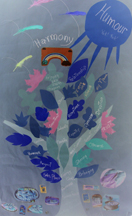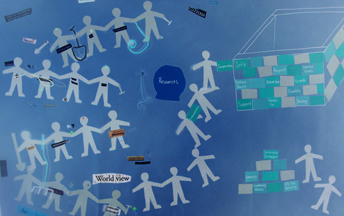The Learning Circles Project |
||
| Activity - Social Rules by Guy Ewing |
||
The Idea Learning circles are inclusive groups, and this means that the social rules in the group will need allow for that particular group of people to learn together. When a learning group begins to meet, it needs to work out its own social rules. This involves finding out what people need. For example, perhaps some of the participants in the group are on psychiatric medication and need to leave the group when they are experiencing side effects. In some groups, this might be awkward, requiring embarrassing and disruptive apologies each time one of these people leaves. But the rules for coming and going can be negotiated so that a person can leave and return gracefully if s/he needs to. In this activity, participants in a learning circle share information about their learning needs, and then negotiate rules that will work for everyone. The Method Then the facilitator asks people to say what they need. S/he writes down these needs on a flipchart, remembering that the flipchart is only notes for an oral list, and that whenever there is reference to a point or points, s/he should be sure to say them, so that participants in the group that cannot read the points will not be left out of the discussion. After some discussion, the facilitator “pools” this information about needs, states everything s/he has learned about people’s needs back to the group and asks whether s/he has everything right. Then the facilitator explains that the circle is going to work on a list of rules that will accommodate all of the needs. S/he leads them in a discussion that begins with needs that are widely shared in the group, then moves to needs that are less widely shared, then moves to needs that may be in conflict and need to be resolved by rules that are acceptable to everyone. As the rules are agreed upon, the facilitator writes them down on a flipchart. At the end of the session, s/he reads through the rules and makes sure that everyone in the group is in agreement. The next week, s/he brings a copy of the list of rules for everyone in the circle and reads this list out loud to the participants. When a new participant joins the group, the facilitator has a private discussion with him/her to find out if the rules will work with this new participant. If they won’t, the facilitator reopens the discussion, bringing the needs of the new participant to the circle. It is useful to review the social rules from time to time. Our understanding of our learning needs evolve, and participants may have new needs to bring to the circle.
|
||

